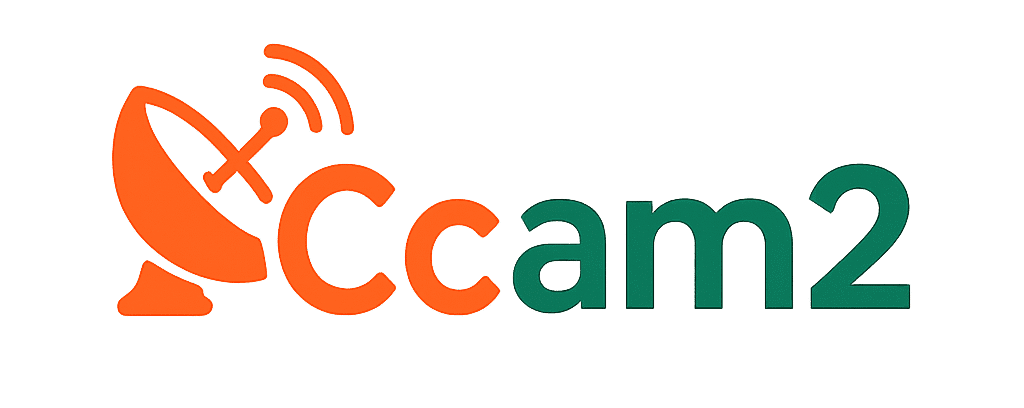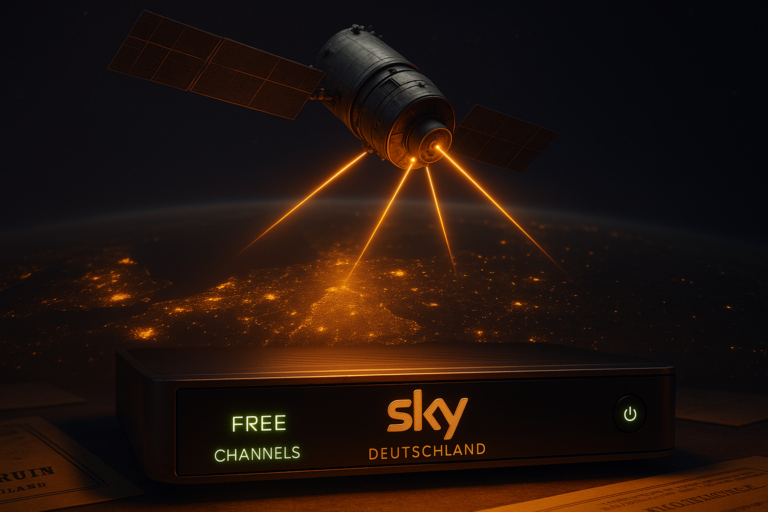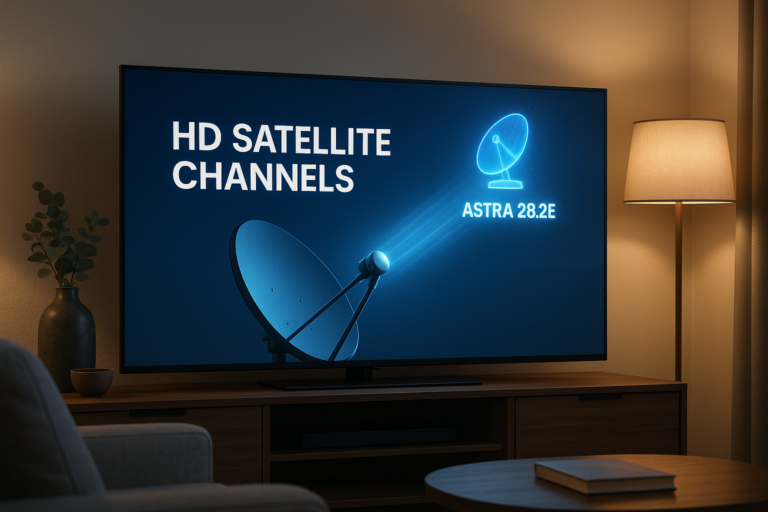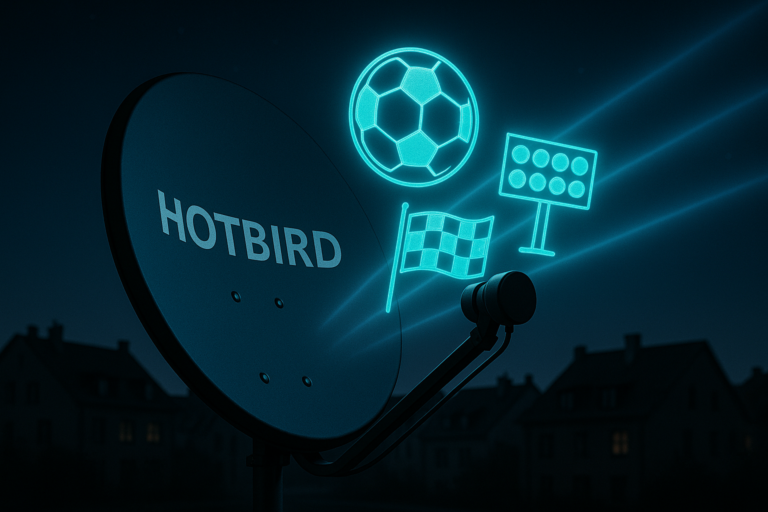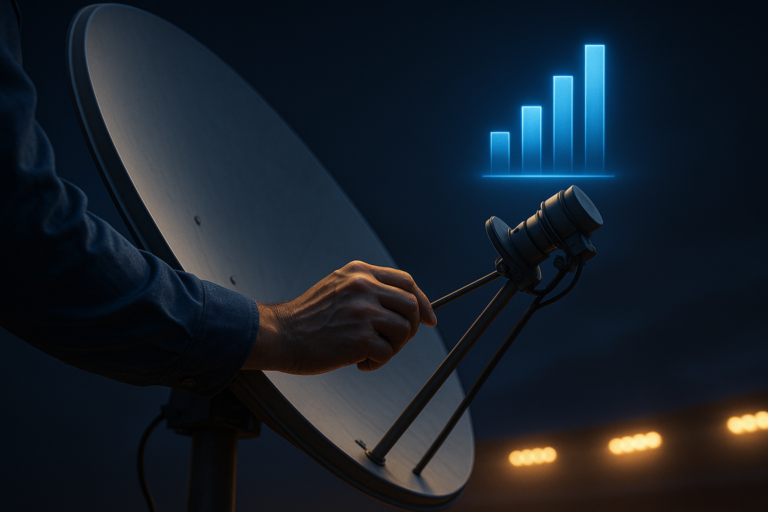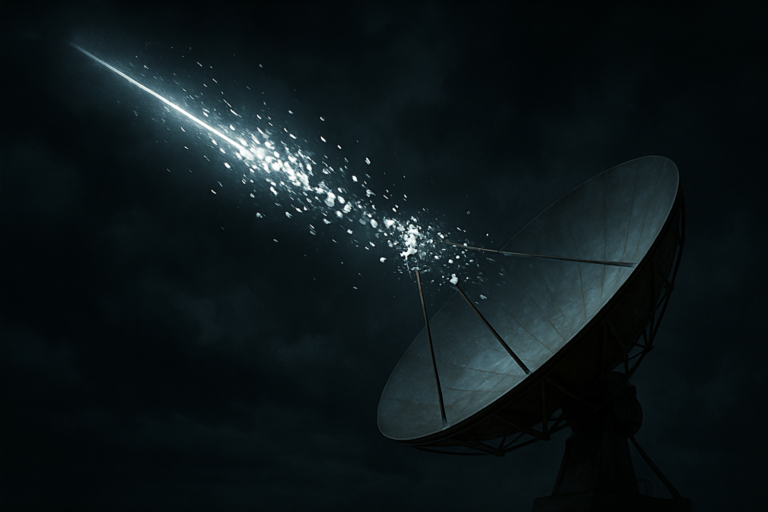Danish TV Channels on Thor and Astra Satellites – Complete Guide
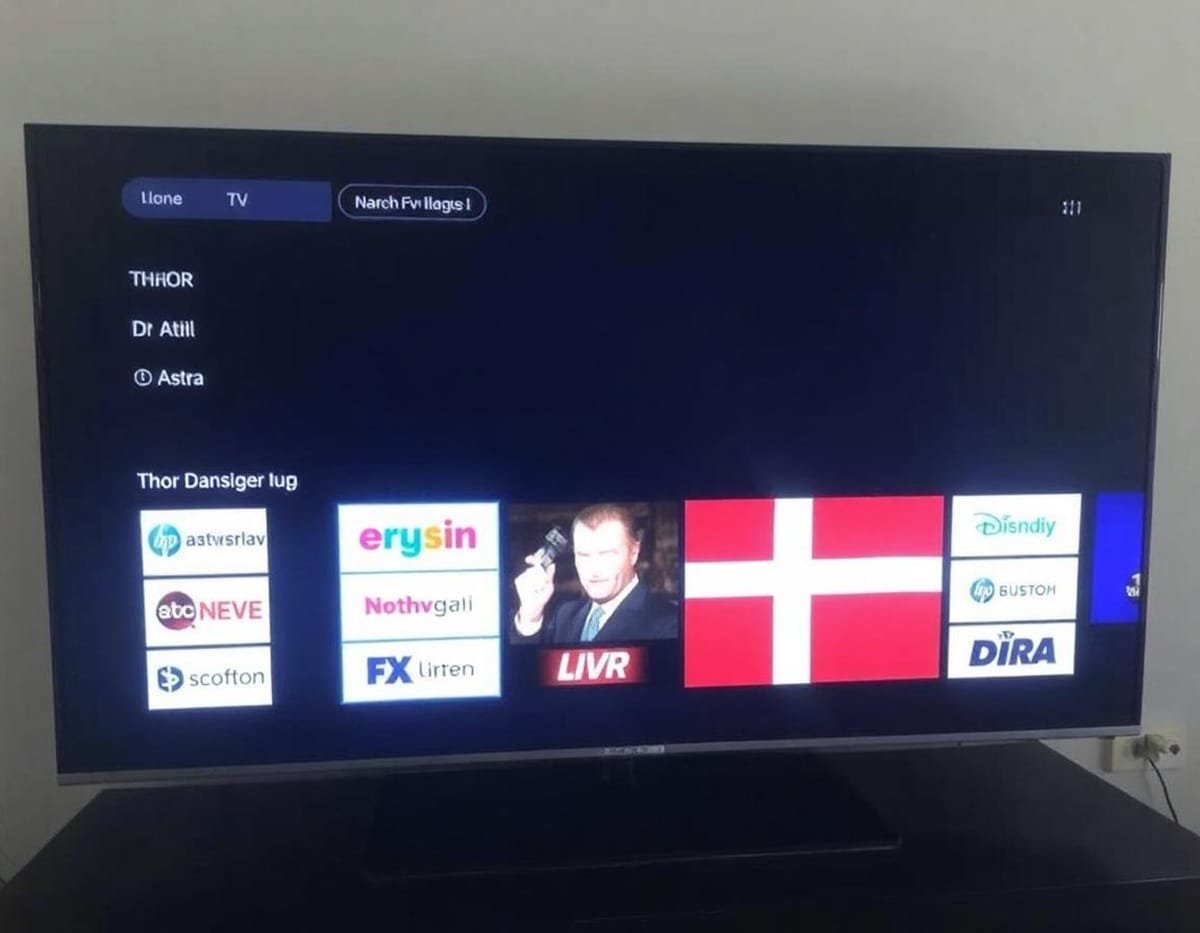
Danish TV Channels on Thor and Astra Satellites [2025 Guide to Frequencies and Viewing]
Danish TV channels on Thor and Astra satellites remain essential for viewers across Scandinavia in 2025, offering a mix of free-to-air and subscription-based content. Staying updated with the latest satellite frequencies is key to uninterrupted access, whether you’re tuning in from Denmark, Germany, or nearby regions. This guide covers everything from frequency updates and receiver setups to channel comparisons and key seasonal programming, helping you optimize your satellite TV experience.
You’ll find detailed frequency tables, tips on how to watch, and insights into seasonal events to ensure you get the best from both Thor and Astra satellites. Whether you’re setting up new equipment or checking for the latest channel shifts, this guide provides clear, practical information to keep your Danish TV viewing smooth and reliable.
Current Frequencies for Danish TV Channels on Thor and Astra Satellites
To watch Danish TV channels via satellite in 2025, having the most up-to-date frequency information for both the Thor and Astra satellites is crucial. These satellites host a mix of popular Danish broadcast channels, including free-to-air and encrypted options, allowing viewers across Denmark, Scandinavia, and parts of Germany to enjoy reliable access.
Frequencies on both satellites vary depending on the channel, broadcast quality (SD or HD), and encryption status. Keeping your satellite receiver updated with the correct frequency, polarization, and symbol rate ensures clear picture quality and uninterrupted service. Below, you’ll find a detailed breakdown of the current channel frequencies, organized by satellite.
Thor Satellite Frequencies (0.8°W)
The Thor satellite cluster remains the primary platform for many Danish channels, especially those distributed by Canal Digital and public broadcasters. Frequencies here generally use DVB-S2 modulation with high symbol rates to support HD quality broadcasts. Most Danish channels are encrypted, primarily using Conax or Nagravision systems, requiring compatible receivers.
| Channel | Frequency (MHz) | Polarization | Symbol Rate (Ksps) | Encryption Type | Notes |
|---|---|---|---|---|---|
| DR1 HD | 10934 | Vertical | 27500 | Encrypted | Main national channel |
| DR2 HD | 10934 | Vertical | 27500 | Encrypted | Public service channel |
| TV 2 HD | 10716 | Horizontal | 27500 | Encrypted | Widely watched commercial channel |
| TV 2 Øst | 10841 | Horizontal | 25000 | Encrypted | Regional channel on Thor 6 |
| Kanal 5 | 11463 | Vertical | 7500 | Free-to-air | Popular entertainment channel |
Channels on Thor usually require dish sizes of around 60–90 cm within Denmark for good reception. Polarization is a key setting to check on your receiver to avoid signal losses.
Astra Satellite Frequencies (28.2°E)
Astra satellites at 28.2° East, primarily Astra 2, host several Danish TV channels, especially those broadcast for wider Scandinavian and European coverage. Astra frequencies also follow DVB-S and DVB-S2 standards with a mix of encrypted and FTA channels.
| Channel | Frequency (MHz) | Polarization | Symbol Rate (Ksps) | Encryption Type | Notes |
|---|---|---|---|---|---|
| TV3+ HD | 11403 | Vertical | 25000 | Encrypted | Popular commercial HD channel |
| Discovery DK | 11488 | Horizontal | 22000 | Encrypted | Danish version of Discovery |
| DR Ramasjang | 10964 | Vertical | 27500 | Free-to-air | Danish children’s channel |
| TV3 Sport DK | 11270 | Horizontal | 27500 | Encrypted | Sports content for Danish viewers |
Reception from Astra may require a larger dish in some areas compared to Thor due to the satellite’s footprint and broadcast power. Astra tends to carry more specialized channels, including HD sports and entertainment options.
Tips for Using These Frequencies
- Always verify the exact frequency settings on your satellite receiver before scanning channels.
- Check whether the channel is free-to-air or encrypted to ensure you have the right smart card or subscription.
- Polarization settings (Vertical or Horizontal) must match exactly to receive the channels without issues.
- Some HD channels use DVB-S2 8PSK modulation, so a DVB-S2 compatible receiver is necessary.
- Satellite footprints can impact signal strength differently depending on your location within Scandinavia or Northern Germany.

Photo by Mike van Schoonderwalt
This overview serves as your quick reference to keep your Danish TV channels tuned in via Thor and Astra satellites. Make sure to check regularly for slight changes, especially during satellite maintenance or channel reshuffles common in 2025.
You might also want to explore the Danish Satellite TV Channel List for additional guidance and receiver configurations.
How to Add New Frequencies on Common Satellite Receivers
When watching Danish TV Channels on Thor and Astra Satellites, keeping your satellite receiver updated with the latest frequencies is key to uninterrupted viewing. Satellite providers often change frequencies or add new channels throughout the year, so knowing how to manually add new frequencies can save you time and frustration. The process is straightforward once you’re familiar with the steps and technical details involved.
Adding new frequencies manually ensures you grab every available channel, especially when automatic scans don’t pick up recent changes. This also applies if you want to add niche or encrypted Danish channels broadcast on Thor (0.8°W) or Astra (28.2°E). Below, you’ll find practical instructions on updating your receiver with new frequencies, tailored for the most common satellite models.
Prepare Your Frequency Details
Before any manual tuning, gather the necessary technical info:
- Frequency (MHz) — the exact channel frequency
- Polarization — usually Vertical or Horizontal
- Symbol Rate (Ksps) — how fast data is sent
- FEC (Forward Error Correction) — typically expressed as a fraction (e.g., 3/4)
- Modulation Type — often DVB-S or DVB-S2 for most channels
This data is available on satellite frequency websites or from your satellite TV provider. Using incorrect parameters will result in no signal or poor picture quality.
Step-by-Step Manual Frequency Addition
Here’s a general guide to adding new frequencies, which applies to popular brands like Vu+, Dreambox, Technisat, and many generic DVB-S2 receivers:
- Access the Menu
Use your remote control to open the receiver’s main menu. - Navigate to Installation or Setup
Look for options labeled Installation, Setup, Antenna Setup, or Satellite. - Select the Correct Satellite
Choose Thor (at 0.8°W) or Astra (at 28.2°E) depending on which satellite hosts your Danish channels. - Open Manual Tuning or Transponder Edit
Find a submenu where you can manually add or edit transponder settings. - Enter Frequency Details
Input the frequency, polarization, symbol rate, and FEC exactly as provided. - Choose the Modulation Type
Select DVB-S2 (if available) for HD channels, or DVB-S for standard definition. - Enable Network Scan (if available)
This option allows the receiver to search related frequencies automatically, expanding your channel list. - Initiate Scan
Start scanning the new frequency for channels. - Save and Exit
After scanning, save the channels found and exit the menu.
Tips for Better Results
- Double-check satellite position: Choosing the wrong satellite will prevent channels from showing despite correct frequency data.
- Update your receiver’s firmware: The latest software supports newer modulation and encryption standards.
- Use a stable dish alignment: Signal strength should ideally be over 70% for a clean picture.
- Be patient with scans: Some frequencies take longer to scan, especially with DVB-S2 and HD broadcasts.
When to Manually Add Frequencies
- Regular satellite frequency changes for Danish TV channels during 2025.
- Adding new Danish channels that don’t show up during automatic scans.
- Receiving encrypted channels that require manual setup for compatible receivers.
- Experimenting with free-to-air (FTA) Danish content on Thor and Astra satellites.
Adding frequencies manually might sound technical at first, but it’s a skill well worth mastering. It guarantees access to all available Danish TV channels in your region on both Thor and Astra satellites. With these clear steps, you can confidently maintain your satellite receiver’s channel list and enjoy consistent viewing quality.
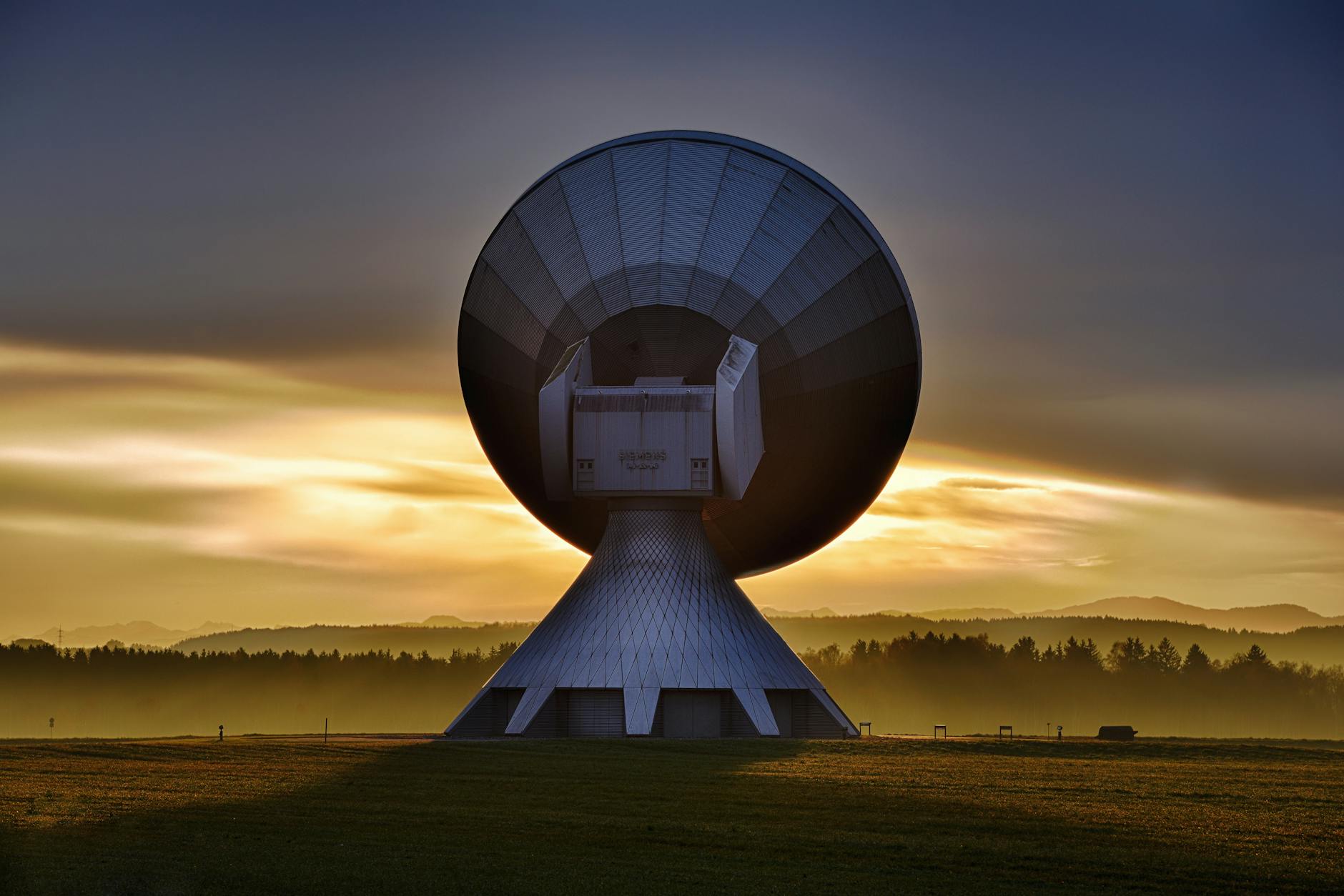
Photo by Pixabay
Satellite TV vs IPTV and Provider Comparisons in Scandinavia
When considering how to watch Danish TV channels on Thor and Astra satellites, many viewers in Scandinavia are weighing satellite TV against IPTV as two main options. Both offer access to a wide range of channels, including popular Danish stations, but they differ in technology, delivery methods, cost, and overall user experience. Understanding these differences helps you choose the right service based on your preferences and location.
Satellite TV in Scandinavia
Satellite TV remains popular across Scandinavia, especially for viewers in rural or remote areas where broadband connections may be slower or unreliable. Satellite dishes pointed to Thor (0.8°W) or Astra (28.2°E) provide a direct broadcast signal that is independent of internet connection quality.
- Stable and Wide Coverage: Once your dish is properly aligned, satellite TV offers consistent signal quality unaffected by internet congestion.
- Free-to-air and Subscription Options: Many Danish TV channels are available free-to-air, while others are encrypted and require subscriptions.
- Equipment Needed: A satellite dish (60–90 cm typically), DVB-S2 compatible receiver, and possibly a smart card for encrypted channels.
- Weather Sensitivity: Signals can occasionally be disrupted by heavy rain or storms, but generally, reception is reliable.
- No Internet Needed: Satellite TV is perfect if you prefer not to rely on internet services to watch your favorite channels.
IPTV in Scandinavia
IPTV delivers television over an internet connection rather than through satellite signals. In Denmark and its neighboring countries, IPTV has grown quickly in 2025, especially with increasing broadband speeds and more flexible viewing options.
- Flexibility and Convenience: IPTV allows you to watch live TV on multiple devices such as smart TVs, smartphones, tablets, and computers.
- Wide Channel Variety: Most IPTV providers offer Danish channels alongside international content, sometimes bundled with Video-on-Demand services.
- Subscription-Based: IPTV generally operates on paid subscriptions, often with multiple package options and no hardware investment beyond your connected device.
- Dependence on Internet: Quality depends on your internet speed and stability, which can vary across the Scandinavian region.
- Additional Features: Electronic program guides (EPG), catch-up TV, cloud DVR, and multi-screen viewing enhance user experience.
Provider Landscape in Scandinavia
Choosing between satellite TV and IPTV also comes down to assessing providers. For satellite TV, companies often collaborate with satellite operators like Thor and Astra to distribute Danish channels. IPTV providers, by contrast, rely on internet infrastructure to stream content.
| Category | Satellite TV | IPTV |
|---|---|---|
| Delivery Method | Broadcast via satellite signals | Delivered over broadband internet |
| Coverage | Broad, including hard-to-reach areas | Depends on internet availability |
| Equipment Needed | Satellite dish, receiver | Internet-enabled device |
| Content Access | Free-to-air and encrypted channels | Mostly subscription based |
| Channel Variety | Limited to satellite packages | Extensive, includes on-demand content |
| Viewing Devices | TV with receiver | TVs, smartphones, tablets, PCs |
| Reliability | High, weather-sensitive | Depends on internet factors |
| Additional Features | Basic EPG, limited DVR options | Advanced features like catch-up, multi-screen |
Recommended IPTV Providers in Scandinavia (2025)
In Denmark and the surrounding Nordic region, several IPTV providers stand out for offering Danish content with good quality and legal compliance:
- Viaplay: Known for a solid lineup of Nordic channels, including Danish TV and sports.
- YouSee: A major Danish IPTV provider combining broadband internet and IPTV packages.
- Stofa: Offers IPTV with bundles covering television, internet, and phone services.
- Telenor Nordic IPTV: Covers several Scandinavian countries with reliable IPTV service.
These providers often provide apps and smart TV compatibility, making it easier to watch your favorite Danish TV channels anytime and anywhere, not limited by satellite dish installation or alignment.
Which Option Fits You Best?
If you mainly want the Danish TV Channels on Thor and Astra Satellites without worrying about internet quality, satellite TV is a solid, low-maintenance choice. Satellite is especially valuable in remote or rural Scandinavia, keeping your connection stable and your picture crisp.
On the other hand, if you prefer flexibility, multi-device access, and a wide content library, IPTV is increasingly attractive. It grants you access to Danish TV alongside on-demand services, supporting modern viewing habits.
Many households now combine both services: satellite for main TV viewing and IPTV for mobile and catch-up options. This hybrid choice delivers the best of both worlds, making sure you never miss important Danish broadcasts no matter where you are.
Key Takeaways:
- Satellite TV offers reliable, high-quality access in areas with limited internet infrastructure.
- IPTV exploits broadband connectivity to provide a versatile, feature-rich viewing experience.
- Evaluate providers by channel selection, subscription cost, and device compatibility.
- Scandinavian IPTV providers increasingly deliver local Danish channels with solid legal compliance.
- Satellite remains essential for many looking specifically for Danish channels on Thor and Astra satellites in 2025.
Choosing between satellite and IPTV depends on your location, viewing habits, and priorities. Both have a place in Denmark’s evolving TV market.
For more detailed help with satellite frequencies that include Danish channels or setting up your system, check this comprehensive guide on satellite TV channel frequencies for helpful insights on receiver configuration and more.
Seasonal Sports and Free-to-Air Cultural Events on Danish Satellites
When tuning into Danish TV Channels on Thor and Astra Satellites throughout the year, you’ll notice how much of the broadcast schedule is shaped by seasonal sports and cultural events. These free-to-air broadcasts connect viewers not only with Denmark’s favorite teams and athletes but also with the rich cultural heritage and vibrant community gatherings that define Danish life. Satellite TV brings these highlights directly to your screen, whether you’re in Denmark, Scandinavia, or parts of Germany.
This section highlights the key seasonal sports events and cultural happenings available free-to-air on Danish satellites in 2025. These broadcasts are perfect for anyone who enjoys live events without the extras of subscription packages or streaming apps.
Popular Seasonal Sports Events Broadcast Free-to-Air
Sports coverage via Thor and Astra satellites is a major attraction for many Danish viewers. Free-to-air channels often carry live broadcasts or highlights of these events, helping fans stay connected wherever they are. The 2025 calendar includes:
- Copenhagen Marathon: One of Northern Europe’s largest running events, the marathon attracts thousands of participants and spectators. Danish channels broadcast highlights and interviews, creating an immersive experience for viewers.
- Royal Run: This mass participation running event includes members of the Danish royal family and thousands of runners. The event is celebrated with live coverage on DR channels, emphasizing community spirit.
- Copenhagen Sprint UCI World Tour: A newer cycling event gaining traction in Denmark’s sports calendar, often broadcast live or in highlight form on Danish sports channels.
- Ironman Copenhagen: Triathlon fans enjoy extensive live coverage free-to-air, showcasing endurance athletes in this prestigious event.
- Copenhagen Historic Grand Prix: Classic motor racing enthusiasts get detailed coverage of this annual event, bringing motorsport history to life on Danish satellite channels.
These sports broadcasts maintain strong viewer engagement by offering events that range from grassroots community races to international competitions, emphasizing both participation and spectator excitement.
Free-to-Air Cultural Events and Festivals
Danish satellites also enrich their schedules with live and recorded cultural programming that captures Denmark’s festive seasons and artistic celebrations. Many of these are broadcast free-to-air, emphasizing accessibility.
- Roskilde Festival: Known internationally, the Roskilde Festival is one of Europe’s biggest music festivals, attracting around 80,000 attendees. Danish broadcasters often provide festival highlights, artist interviews, and live sessions.
- Distortion Festival: Copenhagen’s massive street party and music event gets considerable TV coverage emphasizing urban culture, DJ sets, and community gatherings.
- Cherry Festival (Sakura Festival): This event celebrates the blooming of cherry blossoms with traditional Japanese music and workshops, broadcast on selected public channels during the spring season.
- Copenhagen Photo Festival: As the Nordic region’s largest photography event, the festival’s exhibits, talks, and outdoor installations receive spotlight segments on culture-focused free-to-air programs.
- Tønder Folk Festival & Skagen Music Festival: Folk and classical music fans enjoy broadcast content from these key events in Denmark’s cultural calendar.
- Viking and Historical Festivals: Pageants like the Jels Viking Pageant and Fortress Days in Fredericia bring history alive, often featured in themed broadcasts on public Danish channels.
These cultural broadcasts not only showcase art and music but also promote Denmark’s strong tradition of festivals tied to history, environment, and community engagement.
How Satellite Viewers Benefit from Free-to-Air Event Coverage
Watching these seasonal events on free-to-air channels via Thor and Astra satellites means you don’t need a subscription or fast internet connection to enjoy Denmark’s top sports and cultural moments. This is especially important in rural areas or where streaming options might be limited.
- No extra subscription fees to catch big events.
- Reliable broadcasts with good picture quality, especially on HD channels.
- Access to local perspectives and community stories often missing from international coverage.
- Opportunity to catch special event documentaries, live parades, and festival highlights that deepen cultural understanding.
Satellite Free-to-Air Event Coverage at a Glance
| Type of Event | Example Event | Broadcast Channel(s) | Satellite |
|---|---|---|---|
| Marathon & Runs | Copenhagen Marathon, Royal Run | DR1, DR2 (free-to-air) | Thor (0.8°W) |
| Cycling & Triathlons | Copenhagen Sprint, Ironman | TV 2 Sport, DR Sport | Astra (28.2°E), Thor |
| Music Festivals | Roskilde Festival, Distortion | DR P3, TV 2 | Thor |
| Cultural & Photo Events | Copenhagen Photo Festival | DR2, Kulturkanalen | Thor |
| Folk & Classical Music | Tønder Folk, Skagen Festival | DR P2, regional channels | Thor, Astra |
| Historical & Viking | Jels Viking Pageant | DR Regional, special docs | Thor |
Free-to-air satellite coverage brings these events into homes without the need for cable or IPTV subscriptions. For those interested in broadening their access, exploring the Best Canal Digital Options in Denmark 2024 can provide additional insight into satellite TV plans supporting cultural broadcasts.
By sifting through the seasonal highlights, Danish viewers and satellite enthusiasts can plan their viewing schedules around live events, enjoying authentic local broadcasts with clear signals through Thor and Astra satellites.
This blend of sports and culture accessible free-to-air makes Danish satellite TV a reliable and enriched service offering year-round excitement whether you are an active sports fan or a lover of cultural experiences.
Conclusion
Staying current with the latest frequencies for Danish TV Channels on Thor and Astra Satellites is essential for uninterrupted access and optimal viewing quality. Regularly updating your receiver settings ensures you won’t miss favorite Danish channels, whether free-to-air or encrypted. The detailed guides on adding and managing frequencies simplify this process, letting you enjoy a wide range of Danish content across Scandinavia and neighboring regions.
Explore the diverse programming available, from live sports events to cultural festivals, to fully benefit from what these satellites offer in 2025. Your viewing experience improves with properly tuned equipment and the right receiver setup, so keep this guide handy for future reference.
Feel free to share your experiences or ask questions about tuning Danish TV channels, helping build a community of informed satellite viewers. For more detailed frequency updates and tips, the comprehensive satellite TV channel frequencies guide remains a valuable resource.
